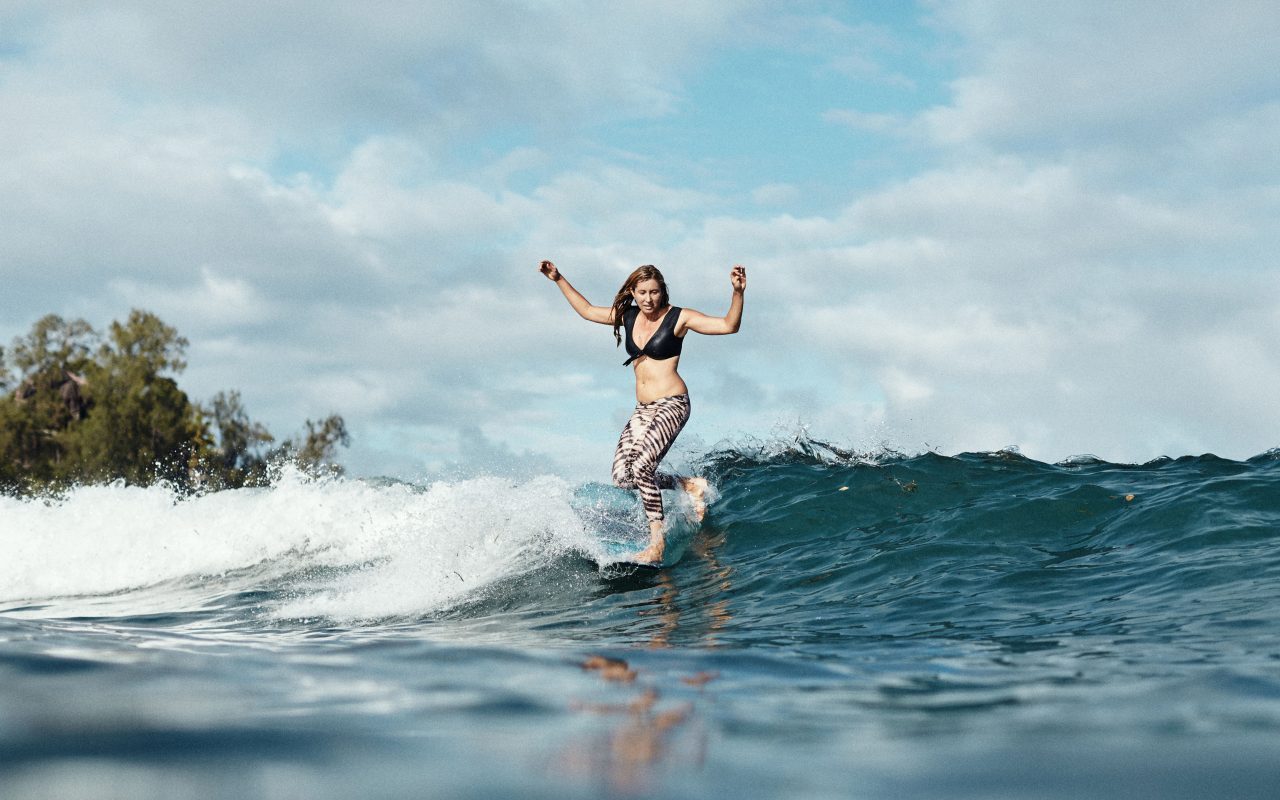
With a new book celebrating female surfers launching in June, the writer, environmentalist and professional surfer tells us about her travel dreams
Lauren L Hill has always been close to the water. Growing up off the coast of Florida, she took up surfing as a teenager and never looked back. As a professional free surfer, the 34-year-old has spent the last 10 years documenting surfing culture all over the world. She has worked as a senior writer for Surfing World Magazine and appeared in award-winning documentary films The Church of the Open Sky, Bella Vita, Beyond the Surface and Transparentsea Voyage.

Now based in Byron Bay in Australia, she also hosts The Waterpeople Podcast with her partner Dave Rastovich, where they discuss issues surrounding marine conservation, gender and the surfing community. Her latest project is co-authoring the new book She Surf: The Rise of Female Surfing with publishing house gestalten, due for international release in June. The beautiful coffee table book explores the history of surfing and the important role that women have played in its development, from Indonesia to India. As well as spotlighting lesser-known surf spots, the book features over 25 notable female surfers such as Liz Clark, Stephanie Gilmore and India’s first professional female surfer Ishita Malaviya.
We spoke to Lauren about her inspiration for the book and what drives her as a surfer, a writer and a traveller.
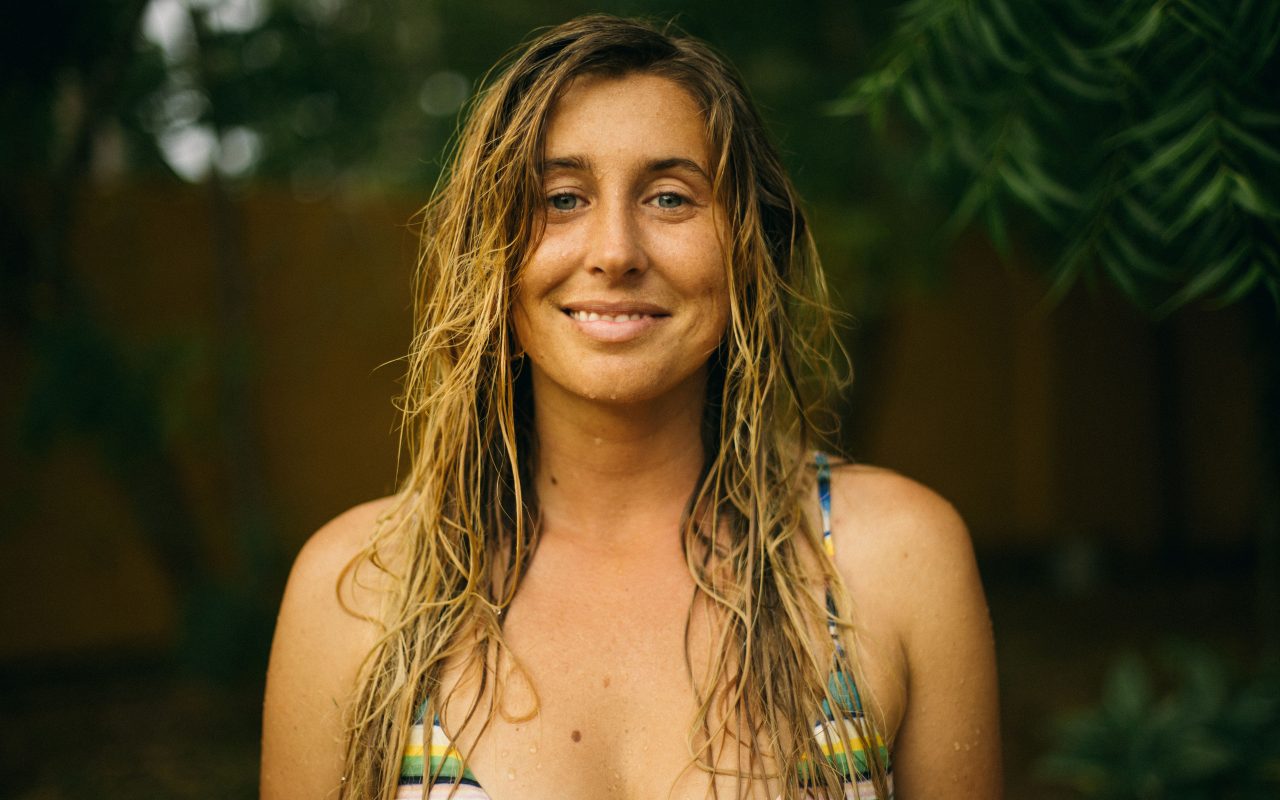
How did you first start surfing?
I grew up on Anastasia Island, a barrier island off the coast of Florida. My family was always at the beach, and my dad grew up surfing as a military kid in Hawaii, so we always had boards around. There wasn’t a whole lot to do in our little community, so surfing was a saving grace.
I started surfing when I was 13 – I had lots of guy friends who surfed and after an especially vivid dream about surfing, I knew that I had to try it. I went on to a moderately successful competitive surfing career and then somehow convinced sponsors to support me as a free surfer.
When did you know it would be a full-time passion?
I was enamoured with surfing as soon as I caught my first wave. I knew I belonged there. The more difficult part was staying true to the calling despite pressures to leave the seemingly superfluous practice of surfing behind – to be more “productive”.
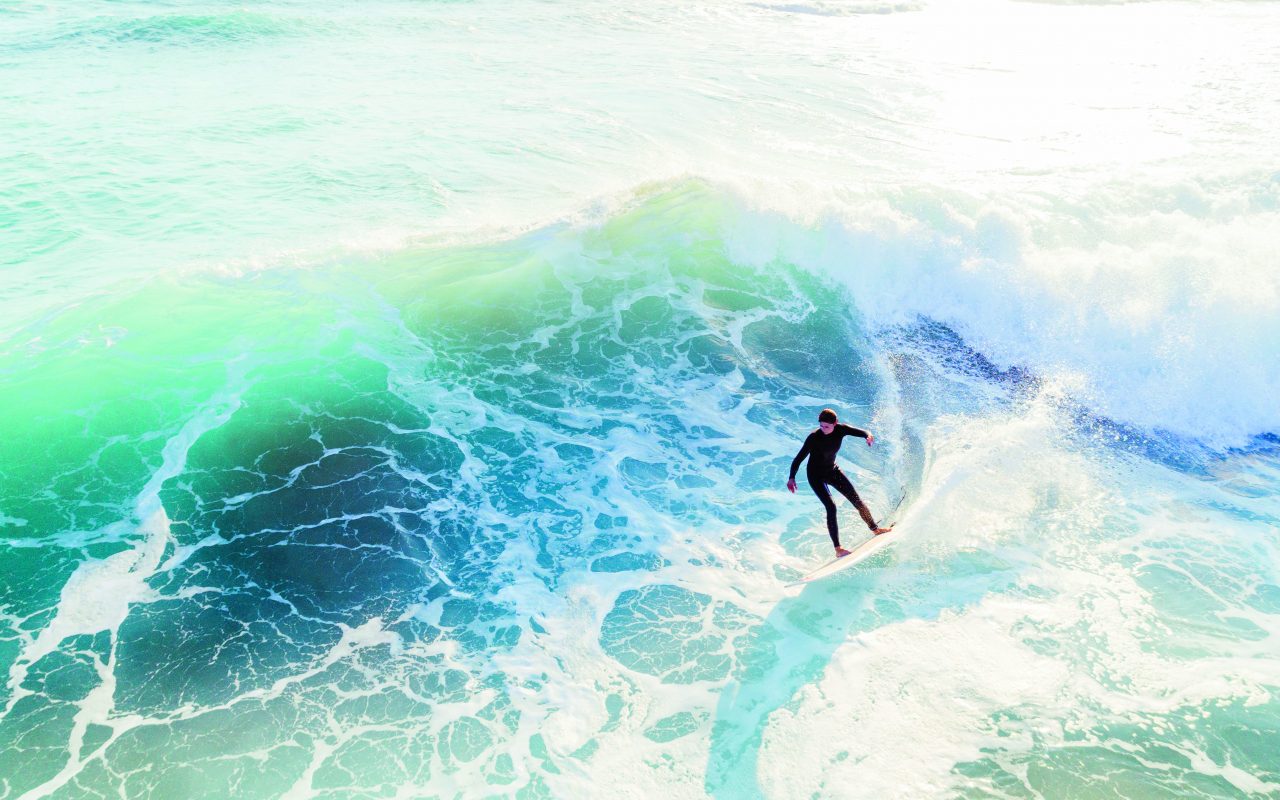
What is it about surfing that you find so inspiring?
There’s an important distinction to be made here: the act of surfing versus the culture of surfing. The act of surfing is deeply personal and offers the potential to connect more deeply with myself, the planet and the diverse marine ecosystems we call home. It can be liberating, meditative and mundane, all at once.
The culture of surfing, however, means lots of different things to different people, but it largely carries the stories of the people in power. That’s partly why I was so passionate about putting a book together to remind women and girls that surfing is theirs, too. And it always has been, since ancient times, even if we were excluded from the dominant narratives.
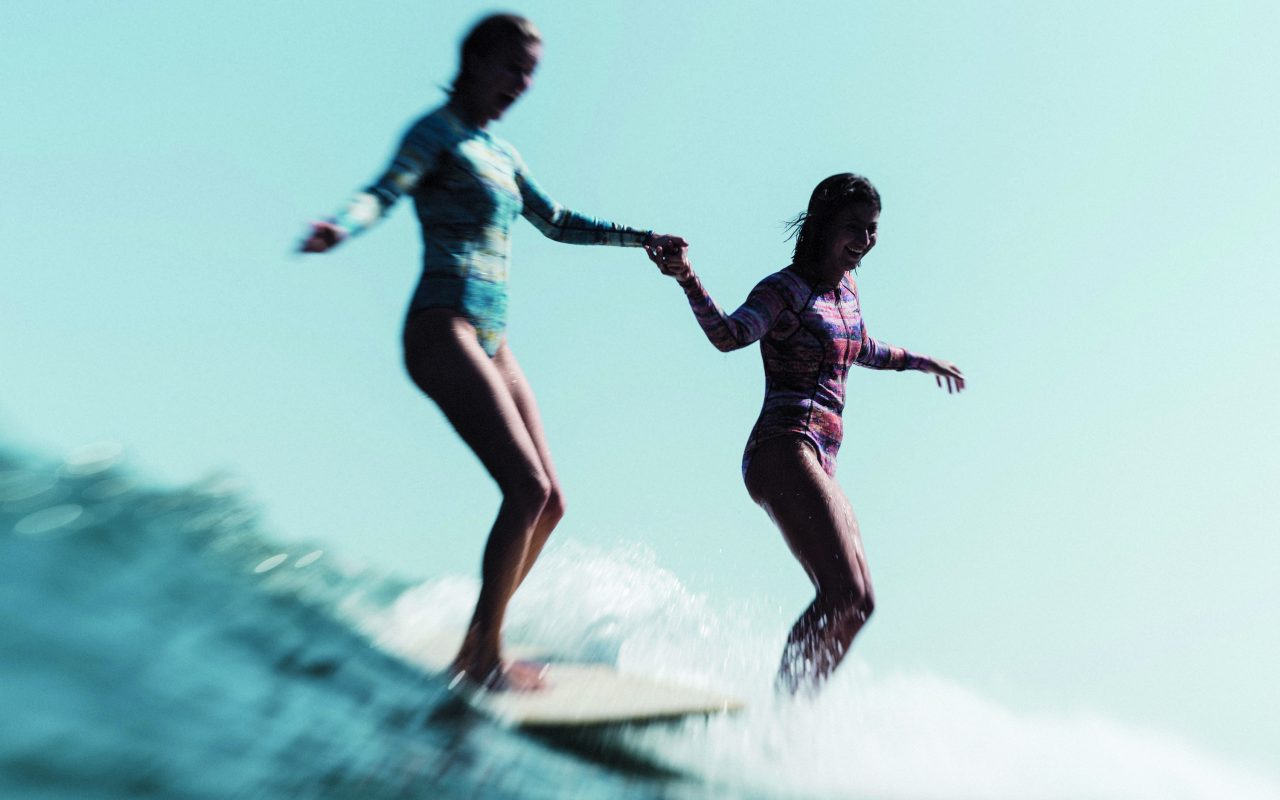
Where is your favourite surf spot?
I love peeling right-hand pointbreaks. There are quite a few on the east coast of Australia, and they all have their days of perfection.
And what’s on your surfing bucket list?
I’d love to experience the long left-handers of Chicama, Peru and the Greek isles to surf and explore the ancient Minoan ruins. My son’s name is Minoa, so it’s a must-visit destination for us.
How did you end up in Australia?
I first came to Australia in 2006, during a university cultural exchange. I fell in love with the land and ocean here. The light and the colours are so vibrant they feel therapeutic. Later, I fell in love with an Aussie and moved here permanently in 2010. I live just outside of Byron Bay, Australia, on our rural property. We’re currently converting a portion of it to regenerative agriculture.
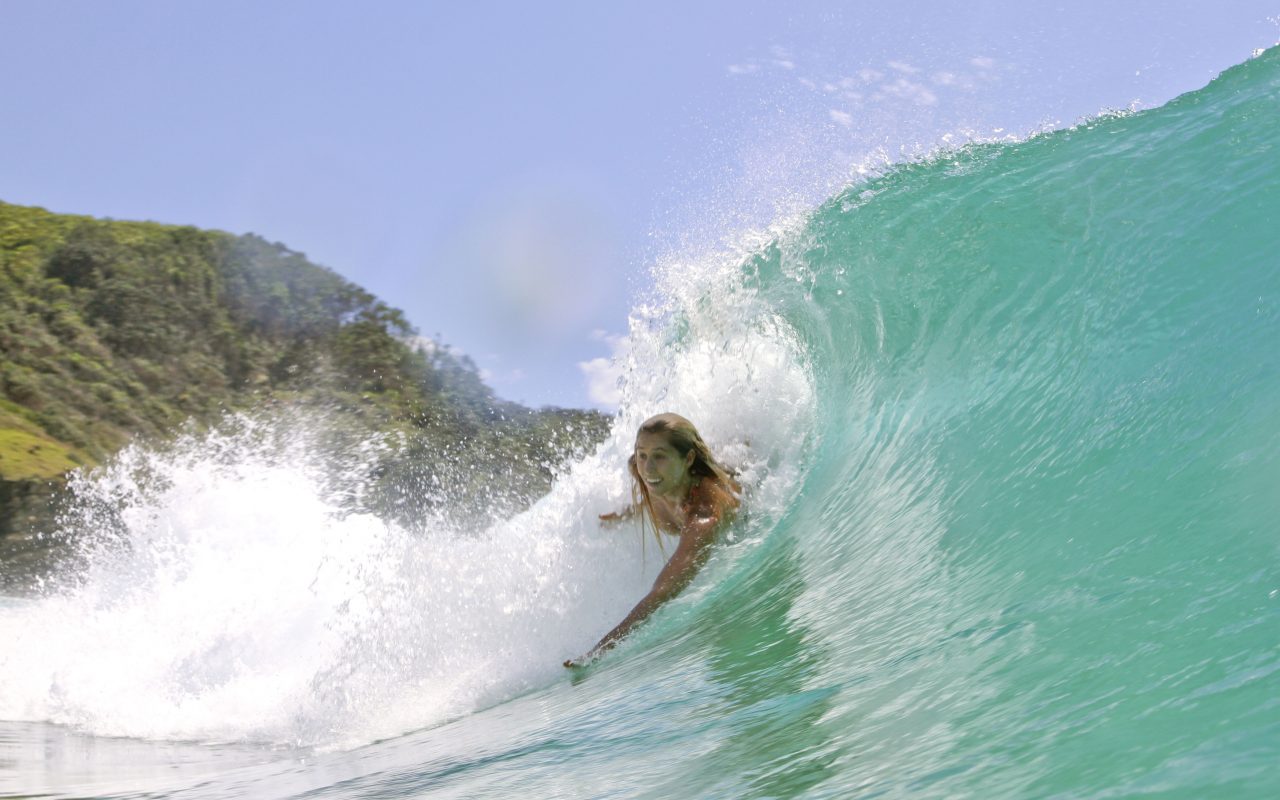
Tell us a bit about your podcast.
The Waterpeople Podcast is a place to hear from some of the most adept waterfolk on the planet – surfers, freedivers, fisherfolk – about the aquatic experiences that shaped their lives, on land and in the water. It’s a hub for our global ocean community to connect through raw and real storytelling and collaborate on solutions to address social and environmental issues. Surf media has tended to be quite exclusive, homogenous and advertorial-driven. My partner Dave Rastovich and I wanted to create a space to deep dive into the vulnerable territory that surf media tends to neglect – and to include diverse perspectives on what it means to craft a meaningful watery life.
What made you decide to put the book together?
I graduated with degrees in Social and Environmental Science in 2008. The global financial crisis was going down and good jobs were few and far between. I took on some menial jobs to pay off my student loans and started blogging about the intersection of surfing, gender and the environment.
I’ve been personally exploring these same themes for more than a decade, on top of 20 years of surfing, and that work makes up most of the text of the book. The extra time that the financial crisis afforded me ended up being the greatest blessing of my career – it allowed me to follow my curiosity for storytelling.
Gestalten approached me last year about collaborating on a book, and it was an easy decision. I knew that a women’s surfing book was never going to be made if I left it up to endemic sources of support.
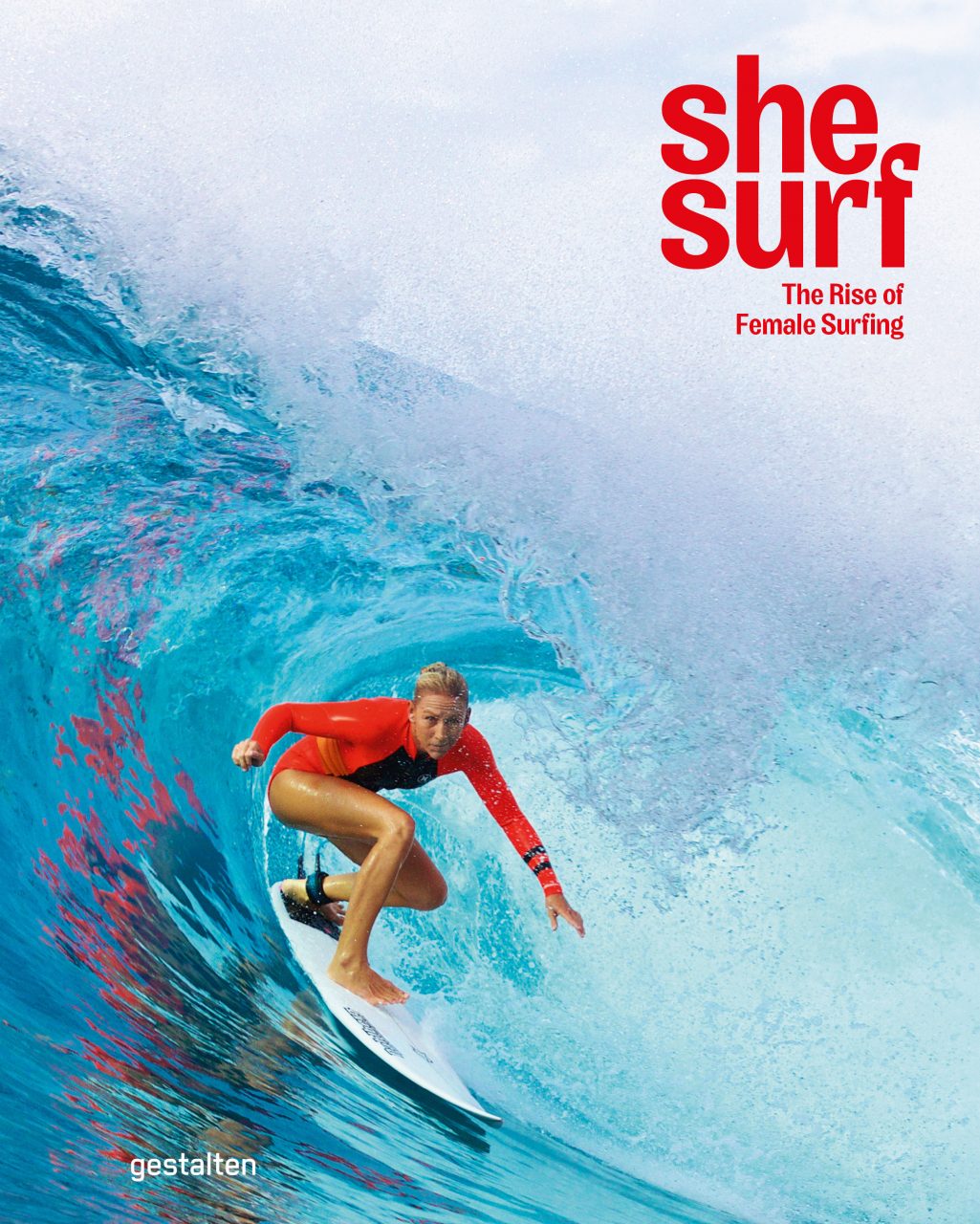
Who are some stand-out female surfers you interviewed for the book?
Most of the women in the book are people I know and love or have respected for a long time. Stephanie Gilmore bridges the chasm between athleticism and artistry in such a unique way that her voice was essential for this book. I also loved the stories of people who had to overcome great adversity to live their surfing lives – women like amputee Dani Burt, the world’s first female adaptive World Champion, and Ishita Malaviya, who is India’s first recognised female surfer.
Any exciting and unexpected discoveries?
I loved discovering and writing about women who aren’t really known as surfers – like the best-selling author of all time Agatha Christie and Hollywood starlet Marilyn Monroe, and how they helped to shape surf culture, too.
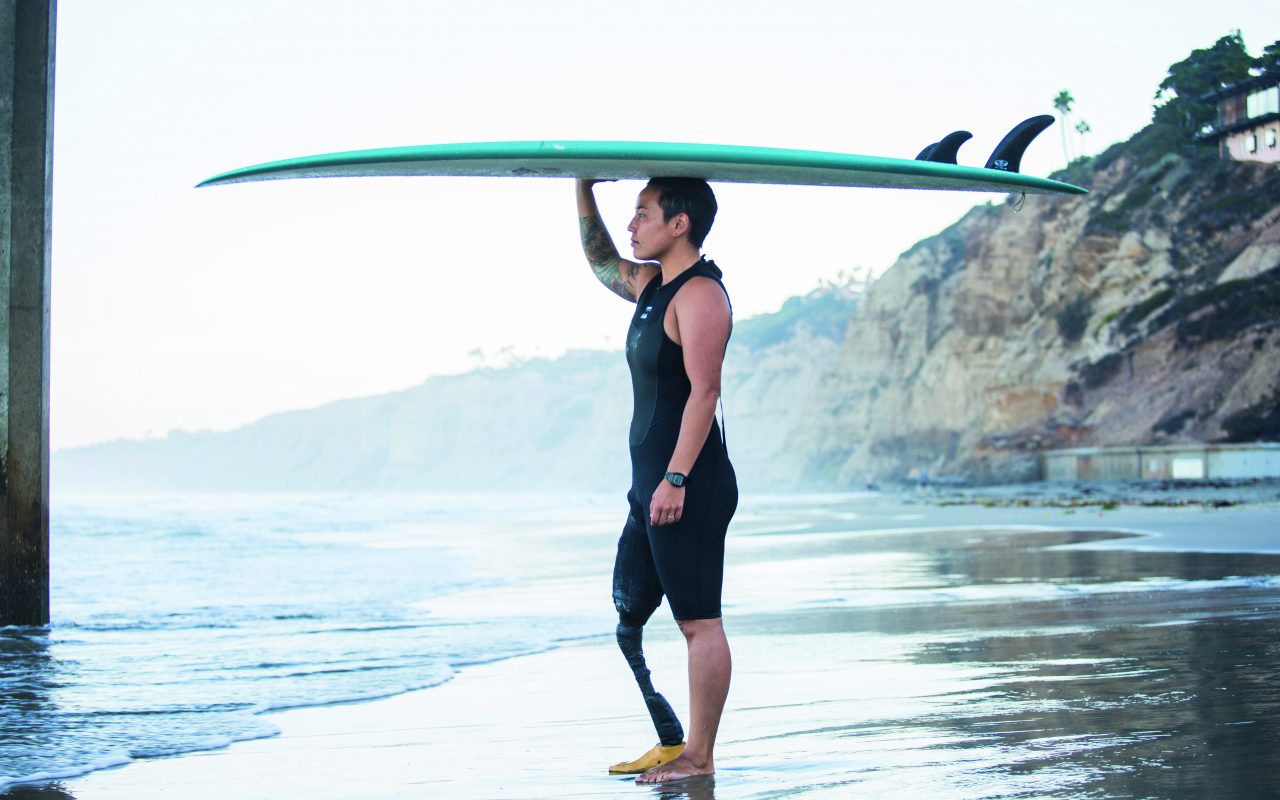
Tell us about the destinations you highlighted in the book.
All of the destinations, except one, are places where I’ve spent time and surfed, and learned so much from. So writing about each destination was a personal distillation of my experience there. The Seychelles is one of my all-time favourite destinations because it is so remote and pristine, plus surf culture is so new there.
What message do you hope the book will pass to readers?
That surfing is for everyone and protecting our planet is essential to the definition of what it means to be a surfer.
Which place has surprised you most?
Sri Lanka, mostly because I didn’t have many expectations. We were cared for so warmly by a local family, ate outstanding fusion cuisine, experienced world-class surf and walked in the footprints of elephants on the beaches. It is a spectacular country and I can’t wait to go back.
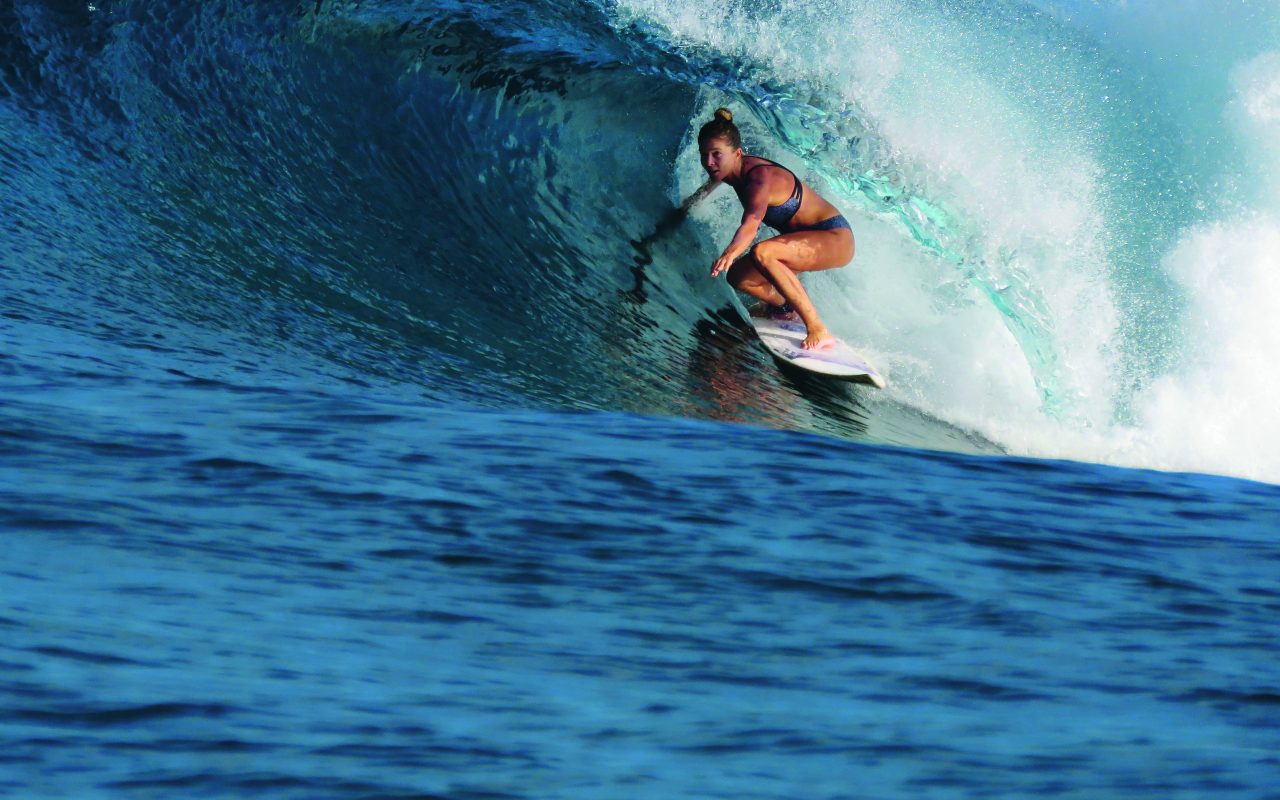
What has been your most life-changing travel experience?
There have been so many, but one of the most life-changing was visiting Australia for the first time when I was 20, being so completely untethered to any responsibilities. None of my family had really travelled extensively, so to be on the other side of the world, so far from my familiar, and to experience the privilege of such radical freedom was pretty life-changing.
What are your three travel essentials?
Pen and paper, a bikini and plenty of snacks (sweet and savoury).
Where are you dreaming of travelling next?
To the beach just behind our house. The surf is spectacular and there’s no one around. I can get lost there for hours and hours surfing, exploring in crystalline rock pools and soaking up the sunshine. Adventure is an attitude.
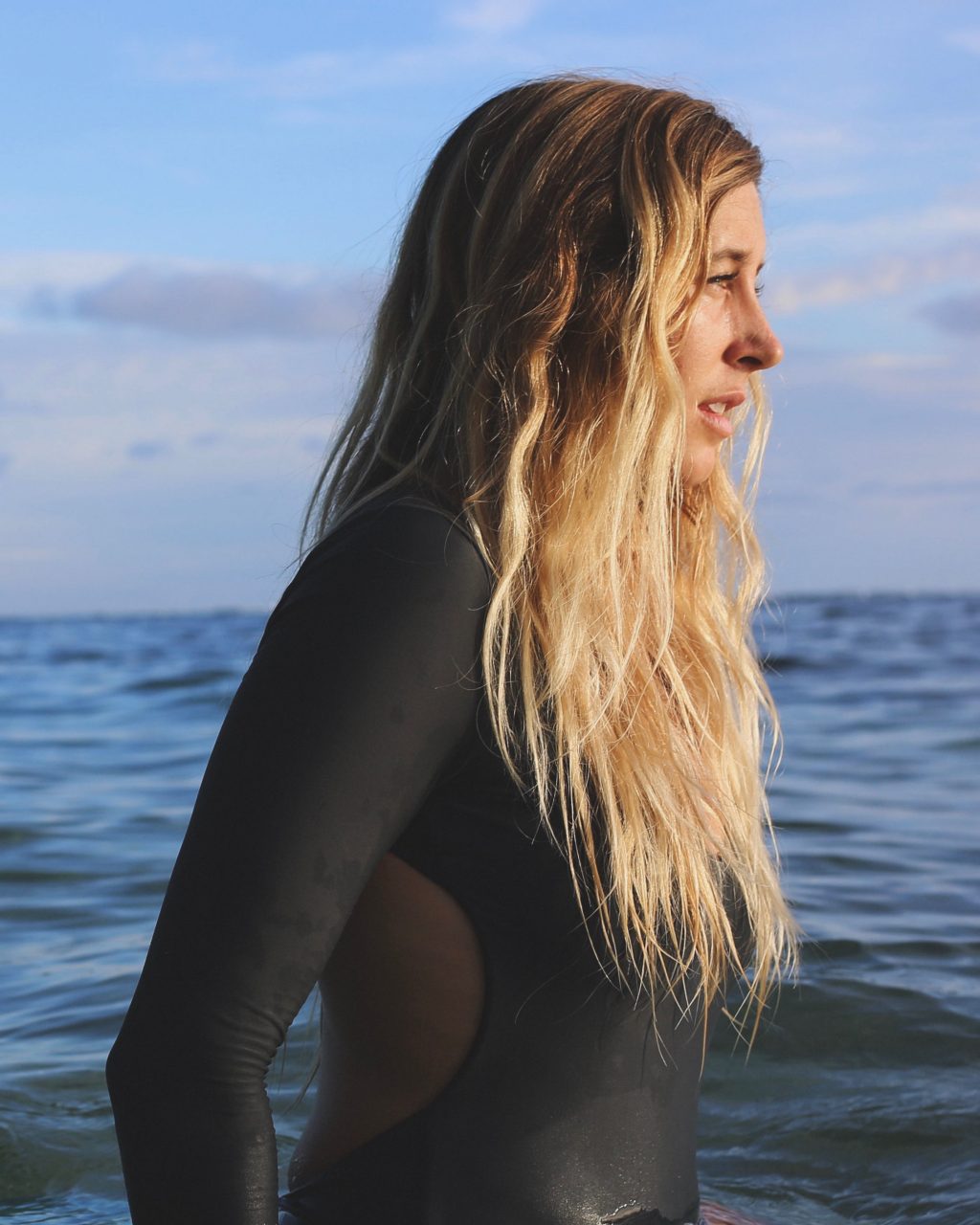
What’s next for you?
Right now I’m working on production for the second season of The Waterpeople Podcast, which will offer twice as many episodes as last season and, in part, take a solutions lens to address social and environmental issues that intersect with our watery lives – like climate change, economic localisation and food systems. We’ve had an unexpected amount of support for the podcast, so we’ll stick with it as long as it feels useful and engaging. I also have a couple of book ideas on the boil and look forward to sitting down to put pen to paper again soon. Yes, I do still like to write by hand.
She Surf: The Rise in Female Surfing is available to order from Gestalten.
SEE ALSO: The rise of Sri Lanka’s female surfers
The post Travel Pro: Taking to the waves with Lauren L. Hill appeared first on SilverKris.
from SilverKris
No comments:
Post a Comment